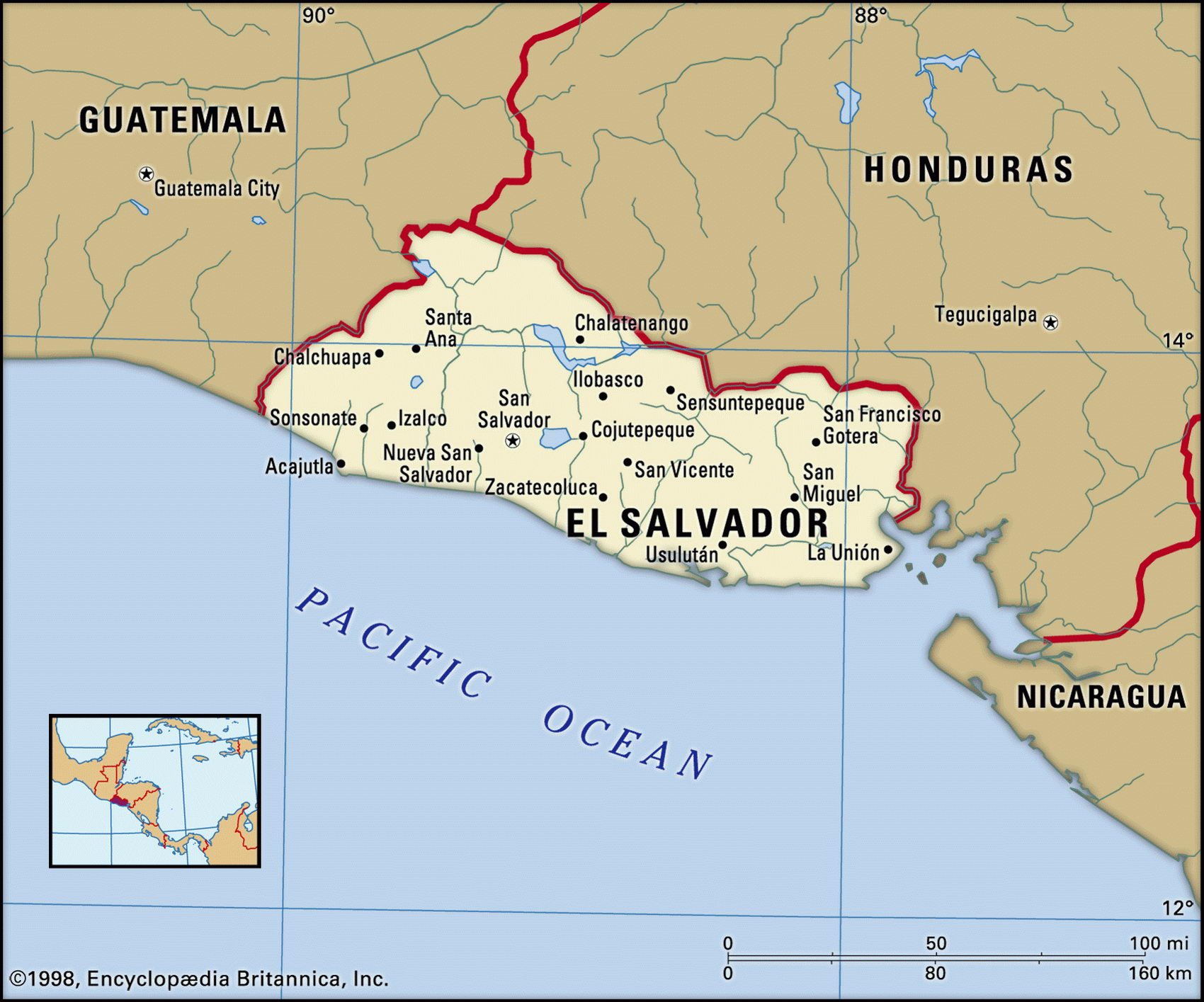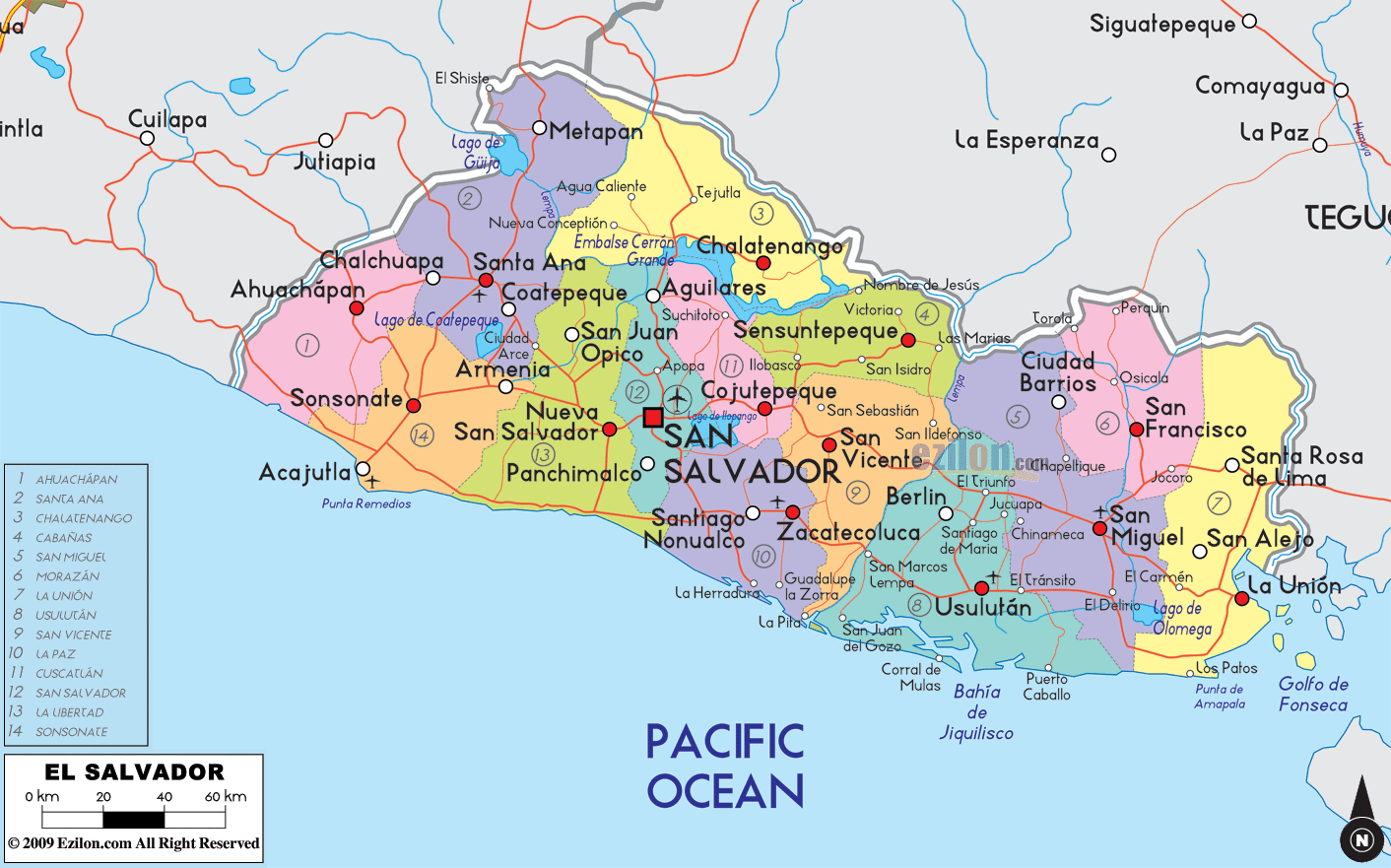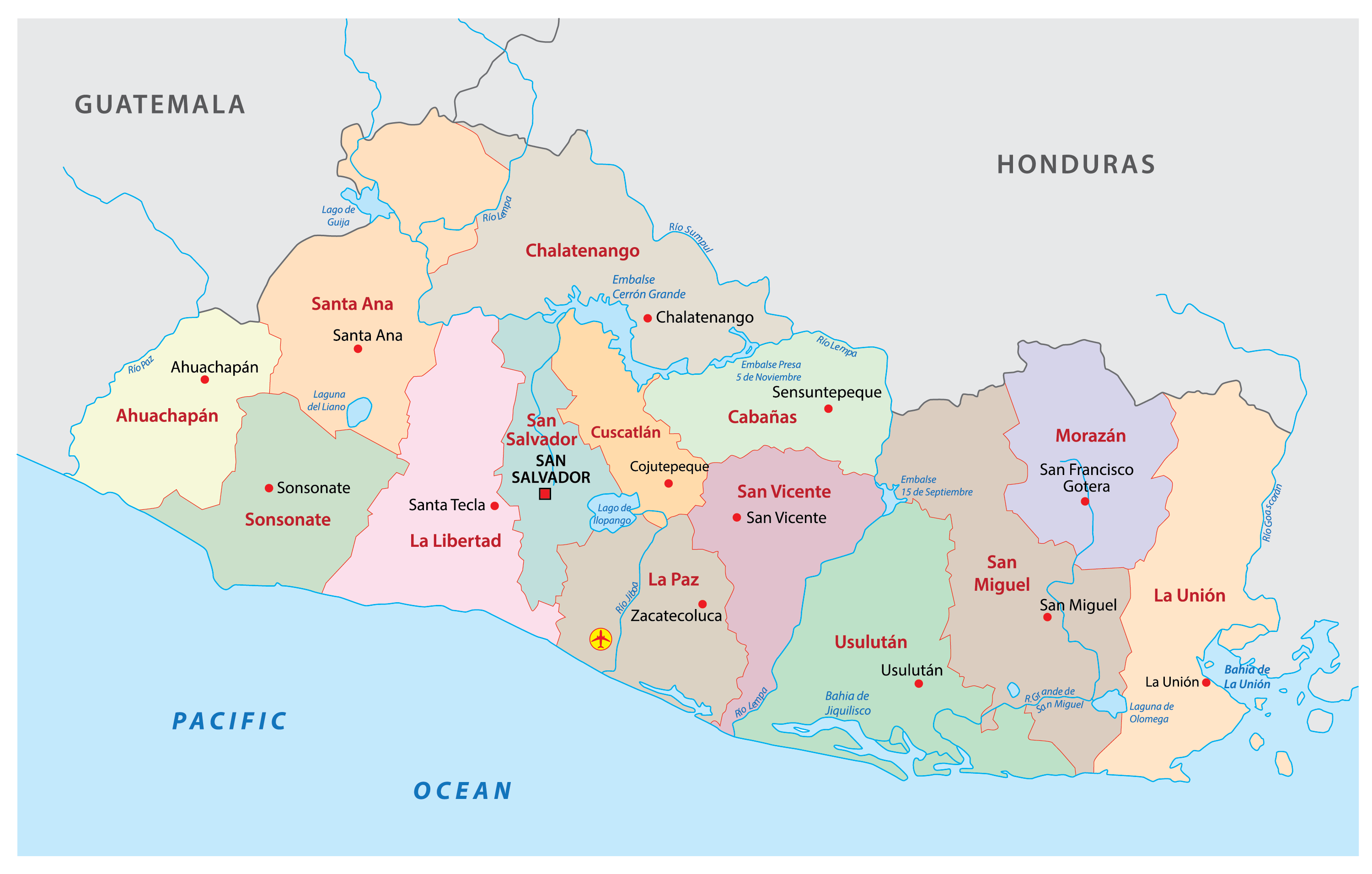When you think about exploring a new place, what's the first thing you reach for? For many, it's a map. And when that place is El Salvador, a map becomes so, too it's almost, a window into its incredible landscape. This small but mighty Central American country holds so much to see, and a good map truly helps you get your bearings. It's a way to truly picture where you are going, or where you have been, you know?
A map of El Salvador isn't just lines and names; it's a detailed picture showing you its major cities, how the land rises and falls, where its beautiful national parks are, and the paths of its rivers. You can even see the countries that surround it and where their international borders meet. It gives you a full look, you know, at what makes this nation special, really.
From understanding its nickname as the “land of volcanoes” to locating its capital, San Salvador, a map helps you piece together the story of El Salvador. We'll look at what these maps show us, how they help us get around, and a bit more about this fascinating country itself. It's quite something, actually, how much information a map can hold.
Table of Contents
- Understanding El Salvador's Location
- What You See on an El Salvador Map
- Getting Around with El Salvador Maps
- More About El Salvador (Beyond the Lines)
- Questions People Often Ask
Understanding El Salvador's Location
To truly appreciate an El Salvador map, it helps to first grasp where this nation finds its place on the greater world map. It's a country with a very distinct spot, you know, in a region known for its warmth and rich culture. This perspective helps you see how everything fits together, from its physical features to its connections with other nations. It's pretty interesting, actually, how small it is yet how much it offers.
Where It Sits in Central America
El Salvador is a country in Central America, and it's the smallest one on the mainland part of the Americas. Its location is quite important, as it sits right on the Pacific Ocean coastline. This means it has a long stretch of beaches and access to ocean activities, which is a big draw for many visitors. When you look at an El Salvador map, you'll see how it nestles into the narrow strip of land that connects North and South America. It's a rather strategic position, in some respects, for trade and travel across the region.
Being in Central America also means it shares a lot of common traits with its neighbors, like a tropical climate and a history shaped by similar influences. The country's size, while small, allows for a relatively quick journey from one side to the other, which is pretty convenient for anyone looking to explore. You can, for instance, go from a city to a volcanic landscape in just a little time. This closeness of different environments is something you can really appreciate when you see it laid out on a map.
Neighbors and Borders
An El Salvador map always shows its neighboring countries and the international borders that define its shape. To its north and east, you'll find Honduras, a larger country that shares a significant boundary with El Salvador. To its west, it borders Guatemala, another country with a rich history and beautiful natural spaces. These shared borders mean there's a lot of movement and connection between these nations, from trade to cultural exchanges. It’s important to remember these connections when looking at the map, as they tell a story of regional ties.
While the provided text mentions Costa Rica and Nicaragua, these countries do not directly border El Salvador. Honduras and Guatemala are the direct land neighbors, and the Pacific Ocean forms its southern edge. This geographical reality is always clear on a detailed El Salvador map. Understanding these boundaries helps you see how the country interacts with the broader Central American region, providing context for its economic and social life. It's kind of like understanding the pieces of a puzzle, you know, where each country fits.
What You See on an El Salvador Map
When you get a chance to look closely at an El Salvador map, you'll find it's packed with interesting details. It's not just a simple outline; it's a window into the country's physical features and the places where people live and work. From the highest peaks to the winding rivers, a map provides a real sense of the land. It helps you picture what it would be like to actually be there, walking through its towns or seeing its natural wonders. This visual guide is, you know, pretty helpful for planning or just satisfying curiosity.
Cities and Towns
Every good El Salvador map highlights the major cities and towns. The capital, San Salvador, is always prominently marked. It's the largest urban area and a central point for many activities. Beyond the capital, you'll see other significant cities like Santa Ana, located in the western part of the country, and San Miguel, which sits in the east. These cities are often hubs for regional commerce and culture. The map shows how they are spread out across the country, giving you an idea of population centers and where services might be found. It's a basic, yet really important, part of any map, helping you locate key places, naturally.
Smaller towns are also usually included, especially those that are important for travel or local economies. Seeing these smaller places on the map helps fill out the picture of daily life in El Salvador. You can often trace roads connecting these towns, which gives you a sense of how people move between different communities. For anyone planning a trip, locating these cities and towns on an El Salvador map is a first step in figuring out an itinerary. It's like building a framework for your journey, in a way.
The "Land of Volcanoes"
El Salvador is famously known as the "land of volcanoes," and this nickname comes to life when you see an elevation map or satellite imagery of the country. An El Salvador map often shows its volcanic topography, with many peaks scattered across the landscape. The Sierra Madre mountain range, which includes many of these volcanoes, runs through the country, creating a dramatic and varied terrain. These geological features are not just pretty to look at; they have shaped the land, influencing soil fertility and even local weather patterns. It's a very distinctive feature, pretty much defining a lot of the country's look.
Many of these volcanoes are dormant, but some are still active, adding to the country's dynamic nature. Seeing these prominent features on a map helps you understand why the land looks the way it does. It explains the fertile valleys and the dramatic mountain views. For example, you might spot Izalco, often called "The Lighthouse of the Pacific" because of its historical eruptions. This unique volcanic landscape is a core part of El Salvador's identity and is clearly visible on any detailed physical map. It's, you know, a constant reminder of the powerful forces at work beneath the surface.
Rivers and Natural Spaces
An El Salvador map also shows its network of rivers and its national parks. The Lempa River is a very significant waterway, flowing through much of the country and providing water for various uses. You can trace its path on the map, seeing how it winds through different regions. Other smaller rivers and streams are also typically marked, showing the country's water resources. These rivers often create fertile areas along their banks, which are important for agriculture. It's a pretty clear indicator of where life flourishes, as a matter of fact.
Beyond the rivers, maps often point out national parks and other protected natural areas. These spaces are home to diverse plant and animal life and offer opportunities for outdoor activities. Seeing them on an El Salvador map helps you identify places where you can experience the country's natural beauty, from cloud forests to coastal wetlands. These areas are vital for conservation and provide quiet spots away from the busier towns. They are, you know, like green jewels scattered across the land, offering a chance to connect with nature.
Roads and Travel Paths
For anyone moving around El Salvador, a map showing roads and transportation routes is incredibly useful. An El Salvador map will typically display major highways, smaller roads, and even sometimes public transport routes. This helps you plan journeys, whether you're driving yourself or relying on local transportation. You can see how the road network connects cities and towns, and how it navigates around the country's varied terrain, sometimes winding through mountains or along the coast. It's basically your guide for getting from one point to another, which is pretty essential.
Detailed maps can even show road conditions in some cases, or provide information about lodging along key routes. This practical information makes a map an essential tool for travelers. Knowing the main arteries and smaller paths helps you understand travel times and distances. It also lets you search for specific addresses and places, making navigation much simpler. It's, you know, the backbone of any trip, allowing you to move with confidence and find your way easily.
Getting Around with El Salvador Maps
In today's world, getting your hands on an El Salvador map is easier than ever. You have so many options, from looking at maps online to printing them out for your own use. This flexibility means you can choose the best way to view the country's layout, depending on what you need. Whether you're planning a big adventure or just curious about a specific area, these mapping tools are readily available. It's pretty convenient, actually, how much information is just a click away.
Interactive Tools and Online Views
Many online platforms offer interactive El Salvador maps. These digital maps let you zoom in and out, pan across the country, and often switch between different views like road maps, satellite images, or terrain maps. You can usually click on places to get more information, like details about cities, points of interest, or even local businesses. These interactive tools are fantastic for exploring the country virtually before you even set foot there. They give you a dynamic way to see regional highways, understand road situations, and get a feel for the transportation options. It's a very engaging way to learn about the country, you know, almost like being there.
These online maps often update regularly, so you get fairly current information about roads and places. They can also provide lodging guides and other practical details, making them a comprehensive resource for planning. Being able to search for specific addresses or places within El Salvador on these maps is a huge benefit, helping you pinpoint exactly where you need to go. It’s pretty much like having a smart guide right at your fingertips, making planning much smoother, obviously.
Maps You Can Print or Save
Sometimes, having a physical copy of an El Salvador map is just what you need. Many online sources offer detailed maps in good resolution that you can print or download for free. This is especially helpful if you're going to areas where internet access might be spotty, or if you simply prefer a paper map for easy reference. Having a printed map means you don't have to worry about battery life or data usage while you're out exploring. It's a reliable backup, in some respects, for your digital tools.
These printable maps can include physical features, road networks, and major cities, giving you all the important information in a tangible format. Whether you're looking for a simple outline map or a more detailed road map, the option to print ensures you always have a reliable guide. So, whether you prefer scrolling on a screen or unfolding a paper map, you have choices that fit your travel style. It's just a matter of what feels right for you, you know, for your own journey.
More About El Salvador (Beyond the Lines)
While an El Salvador map gives you the lay of the land, there are also interesting facts about the country itself that add more color to what you see on paper. Understanding a bit about its people, its capital, and its climate helps bring the map to life. It's like adding the human element to the geographical facts, which is pretty important. These details give you a fuller picture of what El Salvador is truly like, beyond just its borders and mountains, obviously.
A Glimpse at Its People and Capital
As of 2015, El Salvador had a population of about 6,426,000 people. The capital city, San Salvador, is where a significant portion of this population lives and works. It's a bustling center of activity, full of culture, commerce, and daily life. Knowing the population size helps you understand the scale of the country's communities and how its resources are distributed. The capital, in particular, is a place where you can see the country's energy and spirit. It's, you know, the beating heart of the nation.
Beyond just numbers, El Salvador has a rich history and a vibrant culture. While a map doesn't show these things directly, understanding them helps you appreciate the places marked on the map. For instance, knowing about its past can add depth to visiting historical sites shown on a map. The people of El Salvador are known for their warmth and hospitality, adding another layer to the experience of exploring their country. It's a rather welcoming place, typically, for visitors.
Weather Patterns
El Salvador experiences a tropical climate, and understanding its weather patterns can be helpful, especially if you're planning a visit. The country has two main seasons: a rainy season and a dry season. The rainy season typically runs from May to October. During these months, you can expect more frequent rainfall, often in the form of afternoon showers. The land becomes very green and lush during this time, which is quite beautiful. It's a different kind of beauty than the dry season, obviously.
The dry season, on the other hand, runs from November to April. This period sees less rain and generally sunnier skies, making it a popular time for visitors who prefer drier weather. Knowing these seasons helps you decide when might be the best time for your activities, whether you're interested in hiking volcanoes or relaxing on the coast. It’s a pretty important detail for any kind of outdoor plan, you know, making sure you are prepared for the elements.
Questions People Often Ask
Here are some common questions people have about El Salvador maps and the country itself:
What are the major cities on an El Salvador map?
On an El Salvador map, you'll always find the capital, San Salvador, marked clearly. Other big cities that are typically shown include Santa Ana in the western part of the country and San Miguel in the east. These cities serve as important centers for the regions around them, you know, for trade and living. Smaller towns are also usually visible, especially those connected by main roads.
What countries border El Salvador?
El Salvador shares its land borders with two countries. To its north and east, it borders Honduras. To its west, it borders Guatemala. The southern edge of El Salvador is formed by the Pacific Ocean. So, when you look at an El Salvador map, these are the immediate neighbors you'll see surrounding it, naturally.
Why is El Salvador called the "Land of Volcanoes"?
El Salvador earned its nickname, the "Land of Volcanoes," because of the many volcanoes that dot its landscape. A physical El Salvador map or an elevation map clearly shows its volcanic topography, with numerous peaks and the Sierra Madre mountain range running through it. These volcanoes have shaped the country's terrain and are a very prominent feature, you know, making it quite unique.
Learn more about El Salvador on our site, and link to this page here for more specific geographical insights.



Detail Author:
- Name : Marlene Kling
- Username : shea.dickens
- Email : morar.myrna@funk.org
- Birthdate : 1974-06-26
- Address : 297 Durgan Union North Jeramy, MD 38799
- Phone : (828) 219-9377
- Company : Mills, McCullough and Daugherty
- Job : Surveyor
- Bio : Eum fugit ut numquam nisi. Quia natus est amet aut quia. Vero voluptas quidem libero temporibus. Consequatur sed harum id repellat vel repudiandae. Deleniti corporis sunt ipsum officia et.
Socials
linkedin:
- url : https://linkedin.com/in/loren3842
- username : loren3842
- bio : Nulla temporibus nostrum ut sint et quaerat.
- followers : 3921
- following : 1039
instagram:
- url : https://instagram.com/greenfelderl
- username : greenfelderl
- bio : Reiciendis ut rerum reiciendis. Laudantium eaque ipsam mollitia quam.
- followers : 1351
- following : 632
facebook:
- url : https://facebook.com/loren729
- username : loren729
- bio : Consectetur deleniti error nam. Iure omnis id nihil fuga ea et voluptates.
- followers : 4535
- following : 931
tiktok:
- url : https://tiktok.com/@loren.greenfelder
- username : loren.greenfelder
- bio : Aut voluptatem ut et dolores iusto eius.
- followers : 4363
- following : 1082
twitter:
- url : https://twitter.com/loren.greenfelder
- username : loren.greenfelder
- bio : Qui at enim eum voluptas corporis. Aliquam ex ea ab voluptas delectus omnis. Iste eveniet quae assumenda ipsam doloribus.
- followers : 3952
- following : 2899



























